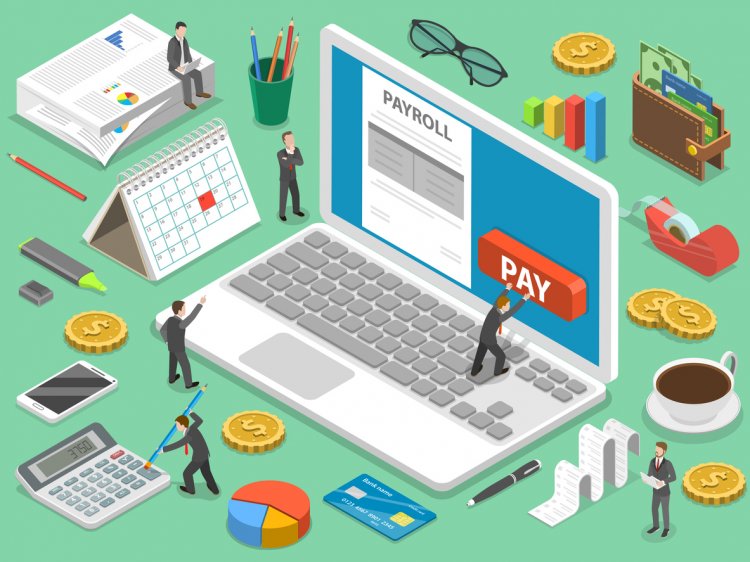7 Budgeting Tips for Small Businesses
As a small business, you know money can be tight. You’ve got to pay for the essential things that let you do business, pay your employees, rent on your storefront… The list is seemingly never-ending. If you want to grow your business and your profits, getting good at budgeting your money is an absolute must. To help you with this, here are 7 budgeting tips for small businesses.

As a small business, you know money can be tight. You’ve got to pay for the essential things that let you do business, pay your employees, rent on your storefront… The list is seemingly never-ending.
If you want to grow your business and your profits, getting good at budgeting your money is an absolute must.
To help you with this, here are 7 budgeting tips for small businesses:
Understand Your Risks
No matter how safe and secure your small business may seem now, every business has some degree of risk.
 Maybe it’s a sudden increase in the minimum wage, or a change to the tax code. Perhaps one of your key suppliers is located in hurricane territory and a storm rolls through. Or the rent on your building goes up 15% in the span of a few months.
Maybe it’s a sudden increase in the minimum wage, or a change to the tax code. Perhaps one of your key suppliers is located in hurricane territory and a storm rolls through. Or the rent on your building goes up 15% in the span of a few months.
Whatever the risks, you need to have an idea of how capable your business is to handle them should they arise. If your expenses come too close to your income, one extra expense could push your register into the red, making it difficult to recover.
Start by listing out your monthly guaranteed income and expenses, and then see how much margin you have left. If things are really tight, you may be less able to deal with an unexpected expense in the future and finding ways to either cut expenses or increase income to give you some extra wiggle room in the event of an emergency.
Overestimate Expenses
Most people aren’t very good at guessing how much something costs. And when they make an error, they usually guess that something costs less than it actually does.
This can be a catastrophic mistake to make when budgeting, as underestimating how much something costs makes you think you have far more money to spend than you actually do.
When building your budget, combat this tendency by adding a bit to every expense on your sheet. Even an extra 5% helps build in some cushion so you aren’t suddenly surprised by big overages.
If you’ve still got decent margins after adding in your cushion, your business is likely in a pretty good financial position. If you’re over your income or a little too close for comfort, it may be time to reevaluate some of your expenses.
Know Your Sales Cycle
Every business has busy seasons and slow seasons, regardless of what they do or sell.
Planning and carefully budgeting can help you better weather these slow seasons, knowing when you can spend money and when you should save it.
If you know your slow season is during the winter, for example, you can begin the talent search process to gear up for the busy season so you aren’t rushing to find and train new people while juggling a full client load. Also, if you’re looking to develop new products or services, or beef up your marketing, saving these planning sessions for your slower season is a better use of your time and money than stretching yourself too thin in your busy times trying to do it all.
Work on your budget so you are spending as little as possible during less busy times, when you’re taking in less money. This helps you save and not blow all your profits when business takes a bit of a dip.
Time = Money
Do you know how much time it takes your employees to complete a standard project, or to process and ship a customer order? 
For many business owners, the answer is “no,” and this can be a costly oversight.
You’re paying your employees to work, and you need to know how much work you’re getting for your money, and whether the amount you’re charging your customers and clients lines up with what getting that project done is costing your business.
If you don’t know your employees’ productivity numbers, you need to begin collecting data as soon as possible. Use time-tracking software where appropriate, or institute a policy that everyone begins writing down the amount of time they’re spending on specific tasks.
Do your best to get all employees to track actual time, not just estimate how long something takes. People typically underestimate the amount of time a task takes, meaning your business is losing money if you don’t have better data.
After tracking time for a while, you may notice that you’re under-charging for the time a project takes and you need to raise your rates. That’s OK! Once you’ve got the data to back you up, make the best decisions for your business going forward, and leave the over-spending in the past.
Get Your Employees Involved
Your business’s budget affects more than just you and your bottom line; it impacts how every one of your employees does their job.
While you don’t have to show everyone the nitty-gritty details of your budget, you can make them aware that, in times when things are rough, it may mean there will be fewer extra perks or new equipment. When things turn around, solicit their input on things they may need to do their jobs better, or ways you can show your appreciation for sticking it out during a downturn.
If everyone is at least somewhat aware of the financial health of your business, they’ll be more invested in its success and, when things are tight, more understanding when you can’t fulfill their requests.
Don’t Forget Savings
Just like with your personal budget, your business needs to stash some money away for a rainy day.
Dedicate a certain portion each month after expenses to put into a savings account that sits and draws interest until you need it for a big purchase, an emergency, or in case things get rough.
It can be tempting to immediately put all your profits back into your business, but you aren’t going to be solvent for long if you don’t have some extra money to fall back on in case you need it. Aim to put aside 30% or more of your monthly income to cover contingencies as well as preserve what you’ll need to pay taxes.
Reevaluate Frequently
 Budgets aren’t meant to be finished, put on a shelf, and forgotten about. They’re living, breathing documents that need to morph and change as your business changes.
Budgets aren’t meant to be finished, put on a shelf, and forgotten about. They’re living, breathing documents that need to morph and change as your business changes.
Set aside time at least once a month, if not more frequently, to see how your actual income and expenditures matched up with your budgeted numbers, and adjust where necessary.
Did you unexpectedly get more business this month? Toss some extra into your savings and use the rest to upgrade those computers that have been slowing down the last few months. Did you go over your budget on materials? See where you can adjust to make things more even.
Most months won’t require huge overhauls, but keeping tabs on your budget several times a year makes your end-of-year budget review far less stressful and surprising, and leaves you more able to adapt your business to the needs that arise out of the blue.
Comprehensive Software Solutions for Small Businesses
With @Assist Toki, you get all the budgetary and accounting help you’d expect out of pricier software, without the extra expense or needing to download a clunky program. Not only that, but you can keep track of employee workflows, manage client communications, track time spent on projects, and more, all through one cloud-based platform. Try it free today!

 contact@atassist.com
contact@atassist.com 





